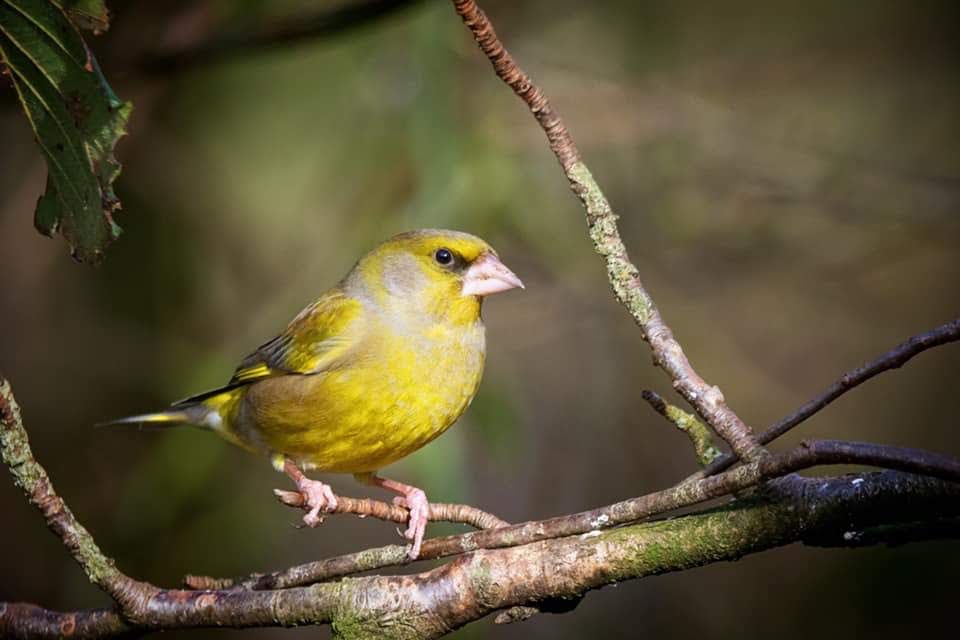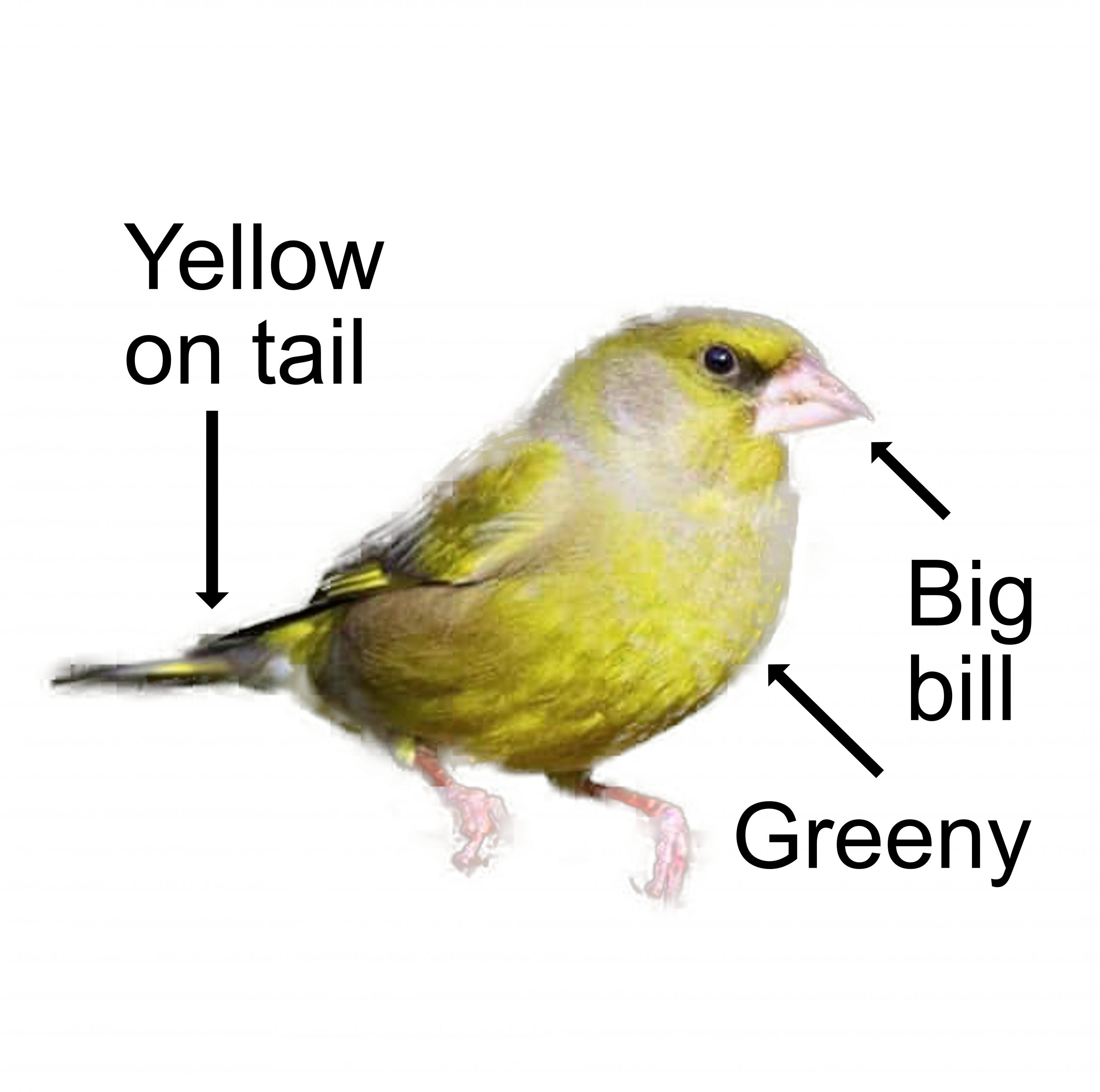
The male Greenfinch lives up to his name. Chunky looking with a large head and olive-green body. They are similar in size to a House Sparrow, like most of the finches. The wings are greeny brown with a yellow streak and there is also yellow on the edge of their forked tail. The female is duller but with the same yellow on the wings. In flight, the yellow on the wings is a dead giveaway.

The Greenfinch sings very wheezily, mainly from March to July, ending his phrases with a long "wheeeeeeeze" on account of smoking too much.
Greenfinches are usually seen feeding in small groups. In winter, they will form larger groups with other finches and sparrows for a fag and gas. The Greenfinch's large bill allows it to open seeds of various sizes, including peanuts from garden bird feeders. They are the king of seeds and will even take seeds from a farmer's cereal crop, yew trees, hornbeams, rose hips and brambles - they are such seed fanatics.
Greenfinches build a bulky nest in a thick shrub made of twigs, moss, and grass which is lined with wool and other soft material. They lay up to 6 eggs that hatch after 14 days. The young leave the nest after 15 days which allows them to easily fit in two broods if not three.
Once a common garden finch, their numbers have fallen since 2005 because of respiratory disease trichomonosis but are now stabilising (see what smoking does to you). They love places with trees and bushes. Churchyards are good. There are 530,000 in Britain. Over recent years, Greenfinches have moved more from farmland into towns, mainly because modern farm machinery does not leave many seeds on the ground for them to eat. There are no Greenfinches in the Scottish Highlands as it is too cold and they don't like whiskey with their cigarettes. There are more Greenfinches in the east and southeast as from there they can pop over the Channel for some handy duty free. Their Latin name is ’chloris chloris’ which means 'green green' (the same source for the word chlorophyll which is the colour in leaves and means 'green leaf').